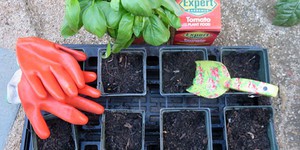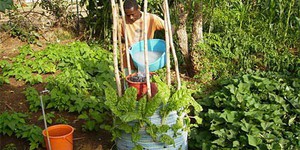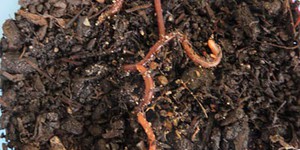Zero Hunger, Fifth Grade Science Projects (24 results)
The United Nations Sustainable Development Goals (UNSDGs) are a blueprint to achieve a better and more sustainable future for all.
These projects explore topics key to Zero Hunger: End hunger, achieve food security and improved nutrition and promote sustainable agriculture.
These projects explore topics key to Zero Hunger: End hunger, achieve food security and improved nutrition and promote sustainable agriculture.
Science Buddies' fifth grade science projects are the perfect way for fifth grade students to have fun exploring science, technology, engineering, and math (STEM). Our fifth grade projects are written and tested by scientists and are specifically created for use by students in the fifth grade. Students can choose to follow the science experiment as written or put their own spin on the project.
For a personalized list of science projects, fifth graders can use the Science Buddies Topic Selection Wizard. The wizard asks students to respond to a series of simple statements and then uses their answers to recommend age-appropriate projects that fit their interests.
Let us help you find a science project that fits your interests, with our Topic Selection Wizard.|
Select a resource
Coding Projects
Sort by
|
Have you ever taken care of a plant? It can be tricky to get it right. You have to remember to water it regularly, and you also have to make sure to give it the right amount of water — not too much or too little. What if technology could help? In this engineering project, you will learn how to automate the entire process of watering a plant. Using a soil moisture sensor and a pump, you will build a circuit that will automatically detect when the soil is too dry, add water, and stop when…
Read more
What do plants need to grow? Most of us would answer that they need light, air, water, and soil. But by using a process called hydroponics, you can grow plants without soil! How does it work? Try this project and see for yourself!
Read more
New
Can AI understand human language? In the future, AI could aid in emergency interpretive service in the hospital when translators aren't available. But can current AI algorithms understand non-verbal languages like sign language? In this science project, you will test whether AI can learn sign language gestures or phrases to see if it can be used for interpretation.
Read more
Soil erosion can cost the world billions of dollars every year by washing pollutants into our streams and rivers and by causing the loss of farmland. What can you do about this problem? Help save the world (and some money!) with nothing more than a few plants!
Read more
Water is a valuable resource, and water shortages are a serious problem in many parts of the world. The problem can be made worse by people who waste water; for example, by watering a garden or using sprinklers on their lawn (or a farmer taking care of an entire field) when it has rained recently or the soil is already moist. How can you help conserve water and prevent such waste? One way is to build an electronic soil moisture sensor. This project will show you how to build a circuit that…
Read more
Plants need nitrogen to grow healthy stems and leaves. Although nitrogen is the most abundant element in the air we breathe, that form of nitrogen cannot be used by plants. Nitrogen contained in fertilizer, on the other hand, is readily taken up by plants. In this experiment, you will compare plants grown without nitrogen fertilizer to plants grown with nitrogen fertilizer.
Read more
New
Are you ever annoyed by a poor Wi-Fi signal? What about when you try to send a text message, and it just won't go through because of poor cell service? Have you ever wondered what factors affect the strength of your signal and the speed of the connection? If so, this project is for you!
Read more
With heat waves impacting the world globally, many gardeners, farmers, and scientists are turning to passive irrigation systems that reduce fossil fuel emissions while keeping plants well-watered and alive in the sweltering heat. In this science experiment, you will compare and contrast the effectiveness of passive irrigation systems compared to traditional surface irrigation systems and their impact on overall plant growth.
Read more
Did you know that soils can be alkaline, neutral, or acidic? Most plants grow best in soil near neutral pH, but some plants prefer slightly acidic and others slightly alkaline soil. What is the pH of the soil in your garden? What happens to the pH of water that comes in contact with soil? In this science project you will get to find out.
Read more
One way to conserve water is to find safe ways to use it more than once. Here is a project to test whether greywater (water that has been used for washing or bathing) can be used for watering ornamental plants.
Read more
Have you ever picked a flower and tried to make it stay alive in a cup of water? How long does that last? Do some flowers last longer than others? Why do you think that is? In this experiment, you will compare different plants to see which ones can regrow or regenerate after damage and learn why some plants are better at it than others.
Read more
Interested in helping the environment, and don't mind getting dirty? In this project you get to mix it up with earthworms, soil, and various types of organic kitchen scraps. The basic idea is to set up small earthworm colonies to compost different types of food waste. You test the soils in each type to see how diet affects both the earthworm population and the nutrients they put back into the soil. This project takes a little time, but it's worth it. You'll help the environment and learn…
Read more
|

















